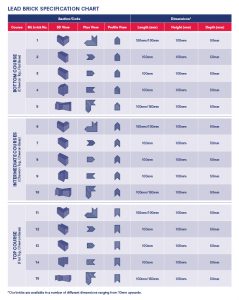Q & A with Warren Goodall, Business Development Manager, Midland Lead Healthcare
In this blog Warren will answer some of the most frequently asked question regarding lead bricks
Q: When do lead bricks provide a better solution than other materials?
A: When a qualified Radiation Protection Advisor (RPA) has specified a lead equivalence thickness (Pb eq.) of 10mm or more, lead bricks are likely to provide the best shielding solution. The thickness of alternative materials required to achieve the same lead equivalence provided by lead bricks are often impractical. For example, concrete greater than 750mm in thickness would be required to meet the same lead equivalence. Even using lead sheets and lead lined boards can be impractical in this situation. This is due to the requirement for multiple layers of lead, thereby making the boards extremely heavy and difficult to handle.
Q: What applications are lead bricks more likely to be used in?
A: In healthcare, applications such as PET/CT, SPECT/CT and Nuclear Medicine are common situations where lead bricks are viewed to provide the most appropriate shielding solution. In industry environments, high powered, in-line, x-ray imaging chambers are commonly built using lead bricks. When it comes to research and nuclear power facilities lead bricks are used in two ways. Firstly, they are used to provide temporary shielding around radiation sources. This is because the small element nature of the bricks makes them flexible, and allows the structures to be disassembled and for shields to be re-built in alternative locations. Secondly, lead bricks are also used in permanent applications, where the sources of x and gamma ray energies are such that thicknesses of up to 200mm are required.
 Q: What if the specification of lead bricks required is not on the datasheet?
Q: What if the specification of lead bricks required is not on the datasheet?
A: Our lead brick datasheet is designed to show the principles of shielding construction using lead bricks. These bricks interlock both horizontally and vertically, ensuring that no photons can penetrate through the structure. However, most specific applications will require, at least, the length or height of the units to be varied to fit. It is therefore common for specific units to be designed and manufactured to cover the interface between horizontal and vertical surfaces, to shield service penetrations or to cope with changes in plan orientation. Our lead bricks are available in thicknesses from 10mm up to 250mm and we work with each of our customers to ensure the specification of the units can be tailored to their individual requirement.



